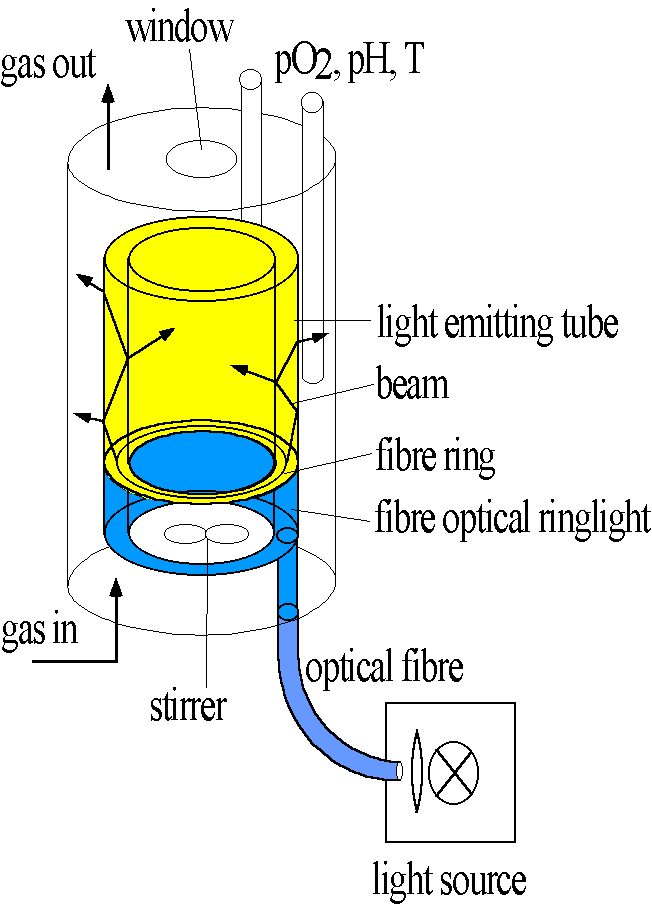Stirred Draft Tube Photobioreactor for Uniform Illumination
Zsuzsa Cso² gör, Michael Herrenbauer, Clemens Posten
Universität
Karlsruhe (TH) - Institut für Mechanische Verfahrenstechnik und
Mechanik –
Kaiserstraße 12 - D-76128 Karlsruhe
Unicellular algae are of interest for the production of polysaccharides, pigments, polyunsaturated fatty acids, and enzymes. Therefore they are cultivated in large scale photobioreactors (PBR).
For the study of microalgal kinetics and for modelling purposes we have designed a new kind of photobioreactor that allows us
| to provide light in the reactor avoiding vertical gradients of light intensity, | |
| to modify the intensity and the wavelength composition of the incoming light, | |
| to realise sterile batch or continuous fermentation processes over a long period, and | |
| to measure and control process parameters as pH, pO2, pCO2 and temperature. |
A mechanically stirred draft tube reactor with a steel double jacket avoids uncontrolled illumination from outside and allows measurement and control of process parameters.
Light is generated in a light source arranged externally and directed into the reactor using optical fibres. The fibres are spread in a ringlight to provide a uniform illumination in the coaxially arranged cylinder which uniformly illuminates the reactor. A scheme of the reactor is given in Figure 1.
Using quartz halogen lamps of 250 W we achieve an average photon flux density of 75 µE/m²/s +/- 20 % in the whole reactor measured with a mini quantum sensor (Waltz).
In the further work we want to apply model based approaches to optimise the illumination and achieve higher light intensities and a more uniform illumination.
We want to study the kinetics of microalgal growth and product formation under controlled conditions and propose mathematical models for microbial growth.

Figure 1: Schematic diagram of stirred tank reactor with illumination